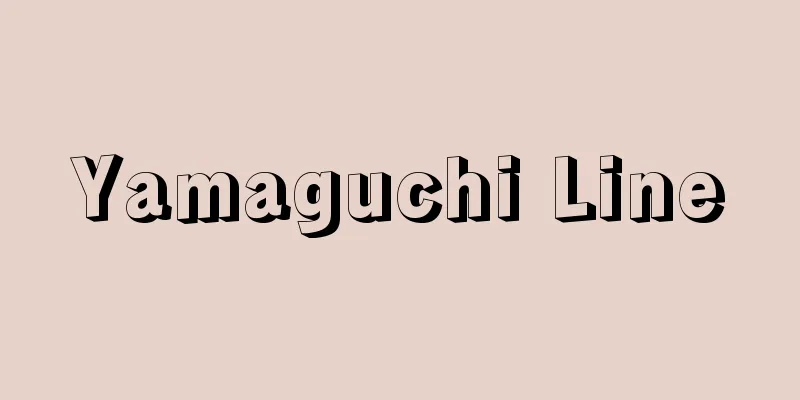Horse riding

|
This is the most famous type of animal acrobatics, and is performed using horses. It is said that it was originally performed as a sideshow for equestrians, but it is also called a type of Sangaku acrobatics, and it can be said that acrobatics, which is a martial art of horse riding, was turned into a performing art. It is said that the show began after the Kyoho era (1716-1736). Classical forms of art known as Japanese acrobatics included pieces such as Tachi-gake, Ichi-san-kudari-fuji, and Tsuru no yosa-hi-i. Around the Kansei era (1789-1801), female acrobatics appeared and became popular. Later, they adopted elements of Kabuki, and began to perform Shichihenge, Tamamo-no-Mae, Hokaibou, Akoya, and other roles. Western equestrian circuses were included in the troupes of imported acrobatics in 1864 (Genji 1), and in 1871 (Meiji 4) the Frenchman Soulier performed in Tokyo, but the Italian Chaline troupe in 1886 was particularly well-received, so much so that Onoe Kikugoro V incorporated it into Kabuki, and Japanese equestrian circuses have since faded into obscurity. In Japan, circuses were called equestrian troupes until the early Showa period. [Oda Koji] [References] |A colored woodblock print of an acrobatics performance from Chu-Indonesia in 1864 (Genji 1) ( owned by the National Diet Library ) Yoshitoshi Tsukioka's "Yokohama Foreigner's Horse Racing" Source: Shogakukan Encyclopedia Nipponica About Encyclopedia Nipponica Information | Legend |
|
動物曲芸中もっとも有名なもので、馬を用いて行う曲芸。もともとは馬術の余興として行われたものというが、散楽雑伎(さんがくざつぎ)の一種ともいわれ、武術としての乗馬技術の曲乗りが芸能化したものともいえる。興行の始まりは享保(きょうほう)(1716~1736)以後のことといわれる。日本曲馬といわれる古典的な芸種には、立ち駆け、一さん下りふじ、鶴(つる)の餌(えさ)拾いなどといった曲があった。寛政(かんせい)(1789~1801)ごろには女曲馬が出現し人気を博している。のちには歌舞伎(かぶき)の趣向を取り入れて、七変化(しちへんげ)、玉藻前(たまものまえ)、法界坊(ほうかいぼう)、阿古屋(あこや)などを演ずるようにもなった。西洋の曲馬は、1864年(元治1)の舶来軽業(かるわざ)興行の一行に加わっていたし、1871年(明治4)にはフランス人スリエが東京で興行したが、とりわけ1886年のイタリア人チャリネ一座の評判はすばらしく、5世尾上(おのえ)菊五郎が歌舞伎に取り入れたほどで、以来日本の曲馬は影を薄くした。日本では昭和初期までサーカスを曲馬団とよんでいた。 [織田紘二] [参照項目] |1864年(元治1)の中天竺舶来軽業興行の錦絵国立国会図書館所蔵"> 月岡芳年『横浜異人曲馬』 出典 小学館 日本大百科全書(ニッポニカ)日本大百科全書(ニッポニカ)について 情報 | 凡例 |
<<: Arctic worm (echinoderm) - Arctic worm (English spelling) Echinoderes dujardinii
>>: Far East Nationalities Championships
Recommend
Double-tailed Butterfly - Polyura eudamippus
An insect of the Nymphalidae family in the Lepidop...
Quarantine - Boueki
Quarantine was originally a synonym for the preve...
Chū shī biǎo (English spelling)
This is a letter that Zhuge Kongming, the chancell...
Freedom of occupational choice
The freedom to choose the occupation one wishes t...
Kakinomoto no Hitomaro's Collection of Poems - Kakinomoto no Hitomaro's Collection
A collection of waka poetry from before the creati...
Pliska
...The country's name "Bulgaria" co...
Occupation - Shikiji
〘noun〙① duties. job title. work. ※Ryo Gikai (718) ...
Lan Xang (English spelling)
...It was governed by a royal ideology that combi...
Lee Sam Pyeong
Year of death: 1655 (1.8 of the Meireki era) Year ...
Carlsbad Caverns National Park - Carlsbad Caverns National Park
A national park in southeastern New Mexico, USA. E...
Storehouse - Kurayashiki
In the Edo period, storehouses were built by feud...
Émile Verhaeren
A Belgian national poet who wrote in French. Born...
Its angle - Kikaku
A haiku poet of the mid-Edo period. A senior disc...
Ausekris - Ausekris
...He often proposed marriage to her daughter at ...
Back strength - back strength
The strength measured using a back dynamometer is...









